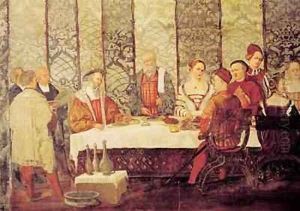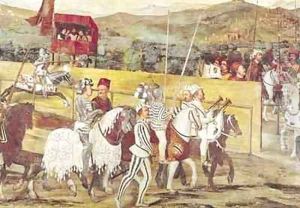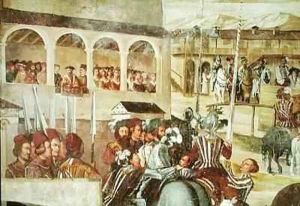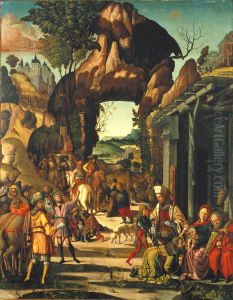Marcello Fogolino Paintings
Marcello Fogolino was an Italian painter of the Renaissance period, active mainly in the region of Friuli and Trentino, north of Venice. Born around 1480, little is known about his early life and training, but it is believed that he was influenced by the works of artists such as Giovanni Bellini and Cima da Conegliano, which was typical for painters from the Venetian sphere during that time.
Fogolino is best known for his religious paintings, which include altarpieces, frescoes, and smaller devotional works. His style is characterized by a delicate use of color and a graceful approach to figures, which often exhibit a soft, lyrical quality. He was also adept at incorporating architectural elements into his compositions, reflecting an understanding of perspective and space.
In the early 16th century, Fogolino worked in Vicenza, where he painted a number of works for local churches. His most significant commission during this time was for the fresco cycle in the Chapel of San Biagio in the Cathedral of Trento, which he completed in the 1530s. These frescoes, depicting scenes from the life of Saint Blaise, are considered to be among his finest works, showcasing his ability to create narrative sequences filled with emotion and drama.
Fogolino's later life is somewhat obscure, but he is thought to have continued working until around 1548, the year of his presumed death. Although he is not as well-known as some of his contemporaries, his contributions to Renaissance art in the regions where he was active are still recognized by art historians and enthusiasts. Fogolino's works can be found in various churches and museums in Italy, and they continue to be studied for their representation of the transitional period between the High Renaissance and Mannerism.




